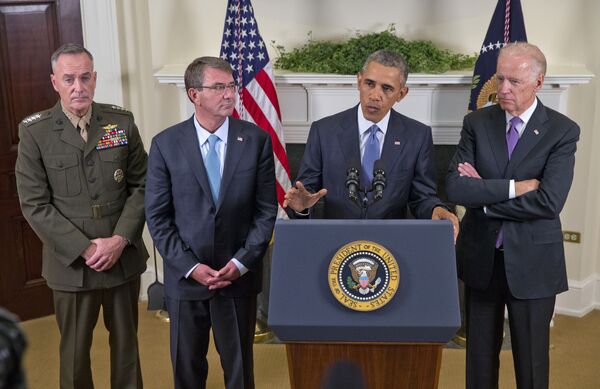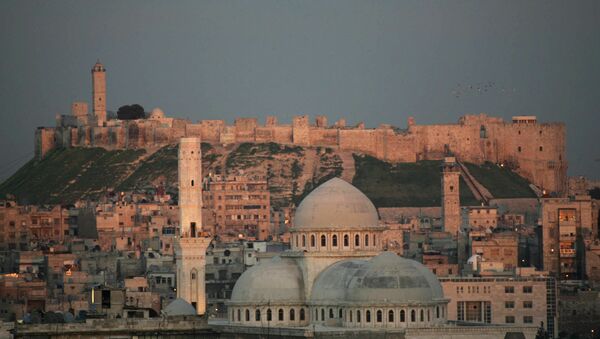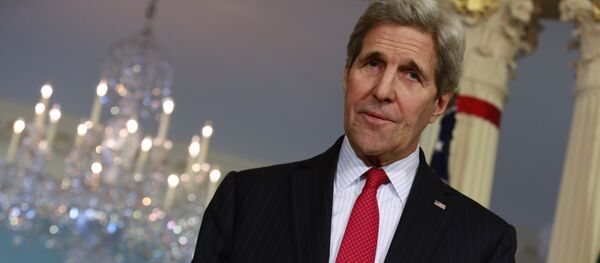It was reported that the plan envisages "an increase in US Special Forces on the ground, an increase in arms assistance to fighters opposing Syrian President Bashar al-Assad, and a no-fly zone," US author and investigative journalist Gareth Porter writes in his article for Middle East Eye.
However, given the present situation in Syria the fuss surrounding the notorious Plan B is much ado about nothing: none of the options are even close to being realistic, the journalist underscores.
"The option of adding more Special Forces is only relevant to a counter-terrorism strategy aimed at the Islamic State [Daesh] group, not at preventing the further weakening of anti-Assad forces. Special Forces are now in Syria to help the one reliable ally against IS — the Kurdish YPG. Sending them into provinces to fight the Syrian army or Hezbollah would be an overreach of stunning proportions," Porter explains.
At the same time, the no-fly zone option is "at the end of the table," the investigative journalist notes, citing an unnamed senior Pentagon official. "Someone may still be advocating it, but it is not going to be adopted," Porter underscores.
What lies beneath Kerry's initiative? On the one hand, the US Secretary of State is sending a signal to the Pentagon that a "serious possibility of a more aggressive US posture in Syria" is not off the table; on the other hand, he is trying to counter attacks to his ceasefire and negotiation strategy from Republicans, the investigative journalist suggests.
Indeed, the serious infighting is going on in Washington between the influential party of war and John Kerry and his backers, Stephen F. Cohen has repeatedly stressed in his interviews with John Batchelor.
While Kerry is apparently interested in mending Russo-American relations and solving the Syrian crisis through a diplomatic process, American neocons and warhawks from the Pentagon, the CIA and the administration are trying to throw a monkey wrench in these efforts.

To add insult to injury, the political elite in Washington is expressing concerns about the Russo-Syrian offensive against the "moderate opposition" in Syria.
The investigative journalist notes that the Obama administration has fallen victim to its own flawed narrative of what exactly has been going on in Syria since 2011.
For years Washington officials have been pushing ahead with the "fiction of a powerful 'moderate' military force in Syria that could be the basis for a negotiated settlement."
However, the evidence continues to mount that since the very beginning the White House has been well aware that the driving forces of the Syrian uprising were Salafists, the Muslim Brotherhood and al-Qaeda in Iraq.
And still there is another explanation regarding what lies behind the much discussed Plan B.
The Plan B actually envisions splitting Syria up and the truth of the matter is that the West is keen on dividing the Arabs, Dr. Ramzy Baroud, an internationally-syndicated columnist, writes in his article for CounterPunch.org.
"The possibility of dividing Syria was not a random warning, but situated in a large and growing edifice of intellectual and media text in the US and other western countries. It was articulated by Michael O'Hanlon of the Brookings Institute in a Reuter's op-ed last October. He called for the US to find a 'common purpose with Russia,' while keeping in mind the 'Bosnia model,'" Baroud underscores.
Kerry's "Plan B" to possibly partition Syria raises the question whether the US would also support partition of Afghanistan, Yemen and Libya
— Brahma Chellaney (@Chellaney) 26 февраля 2016 г.
O'Hanlon proposed to divide Syria into several parts: "one largely Alawite — another Kurdish — a third, primarily Druse — a fourth, largely made up of Sunni Muslims."
Remarkably, Washington has "Plan B's" for other Arab nations as well. For instance, US intellectuals have considered the possibility of dividing Iraq into Shia, Sunni and Kurdish states and carving Libya into three separate protectorates of Tripolitania, Cyrenaica and Fezzan.
Kerry suggests partition of Syria: "there are certainly Plan B options being considered. It may be too late to keep it as a whole Syria."
— Joshua Landis (@joshua_landis) 23 февраля 2016 г.
However, the plans are not about settling the ongoing conflicts or bolstering the nations' welfare: they are about the West's vested interests.
According to Porter, the Syrian Plan B "reveals a familiar pattern of deep division over Syria in which key players seek to advance their own personal or institutional interests and in which the desire to maintain a US leadership role trumps the realities of the situation on the ground in Syria."
"If the US policy were a company doing business in Syria, it would have been bankrupt years ago," Porter concludes.





